Golden Dragon Chi
This post shares an upgraded version of a recipe from my first book which includes a nutrient dense, flavor packed and medicinal grade carotenoid/curcumin-rich Kimchi that will go in my next book
This is Installment #10 of the (Stacking Functions in the Garden, Food Forest and Medicine Cabinet : The Regenerative Way From Seed To Apothecary series.
I love kimchi and I also love to grow a rainbow spectrum of antioxidant and nutrient dense vegetables, herbs and spices in our garden. Thus, while the purple and red end of the spectrum have already been covered, we now enter the shining realm of fiery delight that becomes manifest as Golden Dragon Chi.
This kimchi invites you to embrace the golden hues of the carotenoid spectrum. It is a recipe that not only preserves seasonal garden abundances and tastes great, but also offers Ocular-Regenerative/Ocular-Protective, Glyphosate detoxing, Cardio-Protective (and perhaps Cardio-Regenerative Potential), Radioprotective, Radiomitigative and Radiomodulatory, Osteoprotective and Osteoregenerative, Immune system optimizing, neuroprotective, anti-tumour action, anti-inflammatory (and more) benefits.
Here are a few pics of what goes into our Golden Dragon Chi
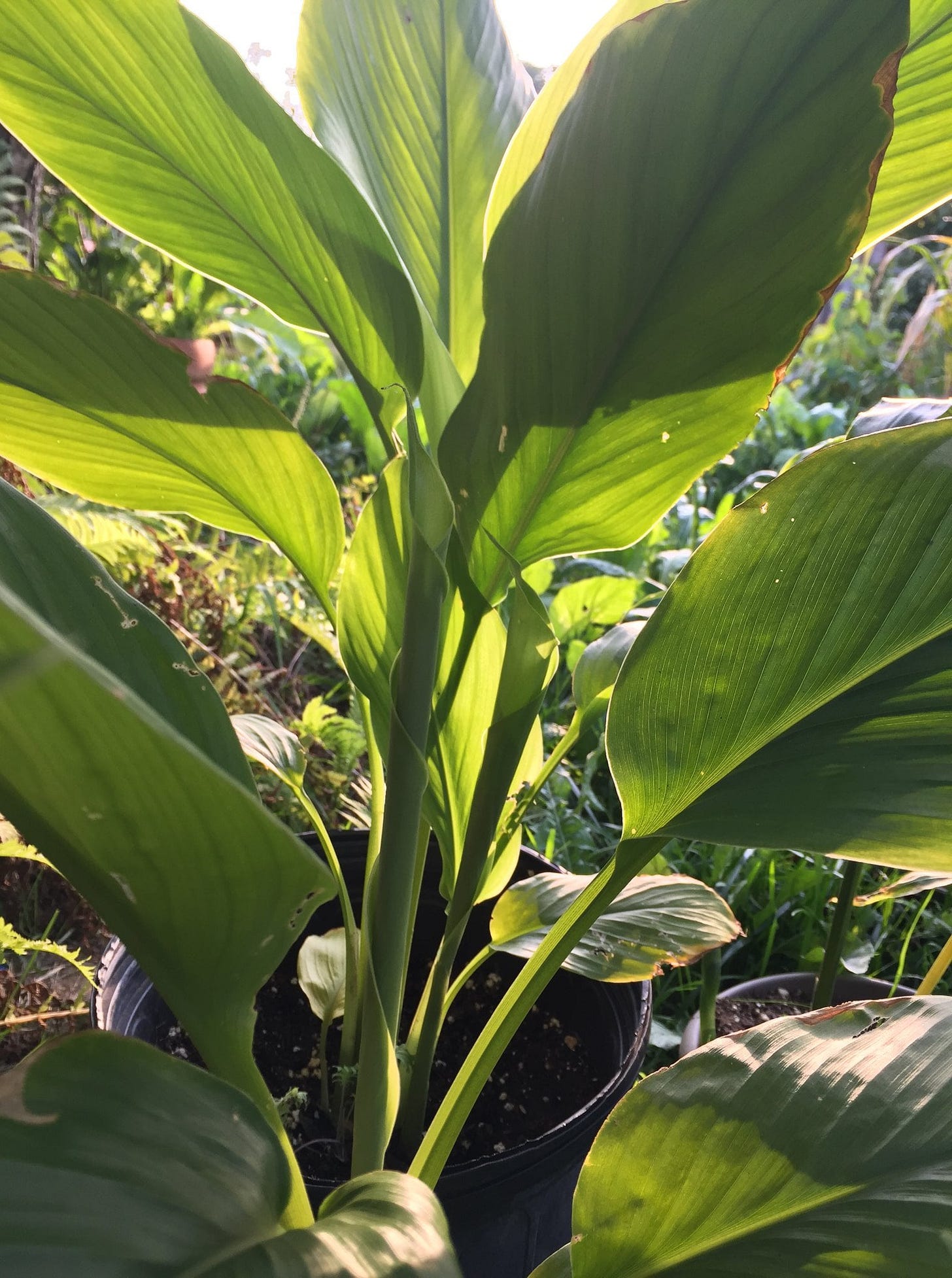
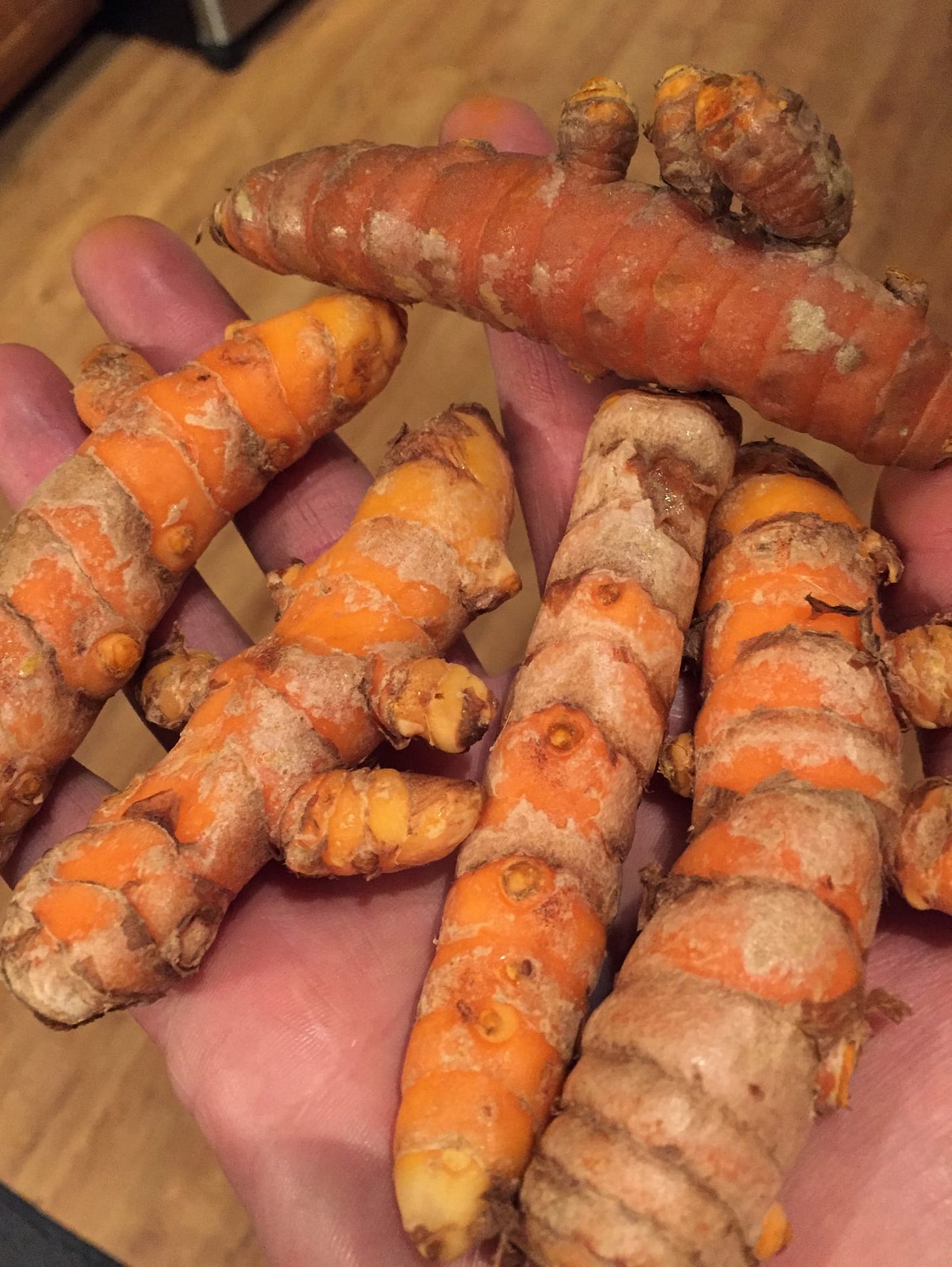

Kimchi is one of our favorite ways to combine many of those crops into a single medicinally synergistic, nutritionally potent and delicious preserve.
The fact that all you need to ferment veggies for creating recipes such as this is salt, a knife, strong hands (and/or a blunt veggie bruising tool) and a fermentation vessel makes this low-tech food preservation method a powerful skillset to develop in the context of emergency preparedness.
I hope the following recipe will inspire you to try creating some of your own medicinal preserves with locally sourced and/or homegrown ingredients. Each step we take to boycott Big Pharma as well as Big AG and instead embrace Mother Earth's medicine cabinet is a conscious choice to move into health sovereignty and realign our creative energy with the regenerative capacity of the living planet.
The carotenoid rich Kimchi I will be sharing the recipe for below is a mixture of vibrant and nutritious fermented superfoods that come together into a well rounded warm, tangy and umami centered sensory experience.
Due to the presence of ginger, turmeric, goji berries, hot chilis, amaranth, five flavor berries, cabbage and probiotics in this preserve it is a food that supercharges/optimizes the function of the innate immune system. Therefore, raw kimchi is not only a delicious food but also a powerful medicine.
Get ready to embrace the power of..
Golden Dragon Chi'
Ingredients:
- 1 medium Napa cabbage, about 2 lbs (savoy, green or any combo works too) chopped into 1 inch squares
- 1 medium green cabbage, sliced thinly
- 1 large daikon radish (or 2-3 turnips) cut into 1 inch long ‘match stick’ sections or roughly grated
- 4-6 tsps sea salt or another coarse natural salt (4 tsps if fermenting at a temperature of 16c-27c (60-80f) or 5-6 tsps if fermenting at a temp of 27 celius plus (80f plus)
- 4-6 carrots, sliced thinly
- 4-5 pieces of of turmeric rhizome the size of an average man’s thumb, finely grated or diced (or ½ tsp powdered)
- water and extra salt as needed for brine
- 2-3 tsps of five flavor berries
- 3-5 Egyptian waling onions (bulbs and greens) chopped (or 3 large leeks)
- 3-4 inch section of ginger, chopped or grated
- 2- 4 cloves garlic diced (optional)
- 6 or more tablespoons Korean red chili powder (gochugaru) or 2 tablespoons each cayenne & Hungarian paprika (or for an even more golden Color use a half cup - one cup of emulsified fresh orange bell pepper instead or along with the traditional chili powder)
- 8-12 scallions (green onions), sliced 1 inch
- 4-6 large kale leaves, sliced thinly
- 2 cup diced amaranth greens (I used Hopi Red and Chinese Multicolored Amaranth greens for the batch shown in these pics)
- 1-2 cups male or female cannabis fan leaves, finely diced
- at least one cup of chopped/crushed hot peppers of your choice (we used Aji Charapita, Bhut Jolokia and Beuna Mulata peppers in ours, which is partially why I used the word “Dragon” in the name of the recipe, as those are very hot peppers and that results in a fiery kimchi, but if you do not want your kimchi to be super spicy, you can use some mellow peppers and it will still turn out great! :) )
- 1 cup fresh or 1/2 cup dried goji berries (diced)
- 1/2 cup grated raw sweet potato
- ¼ cup Kombu or Wakame (dried kelp/seaweed)
- ½ cup pan toasted sesame seeds
optional bonus ingredients:
- a handful of chopped Chrysanthemums (aka Mums) flowers
- a handful of Calendula (aka Marigold) flowers
- a handful of diced goldenrod (Solidago canadensis) flowers
- some Rhodiola Rosea or Rhodiola integrifolia root powder
- 1/2 - one cup grated yellow zucchini
- 1-2 cups nettle greens thinly sliced
- 1-3 thinly sliced shiitake mushrooms, sauteed until cooked and cooled before being added to kimchi mixture
- 1/4 cup grated horseradish root
- 1 golden beet, grated
Instructions:
Begin by removing any damaged or bruised outer leaves from your cabbages, add them to your compost bin. Rinse the cabbages with some clean water and then slice each one in half and then quarters (lengthwise).
Reserve 4-6 sections of the thickest outer leaves and set aside. Proceed to cut out the core of each quarter of cabbage and reserve for either using as a fermentation weight or add to the compost bin.
Slice the cabbage into thin ribbons and add to several large wooden mixing bowls (or one huge wooden vessel) in even proportions.
Cut the napa cabbage into one inch squares and add to the bowls as well. Add about half the salt to the bowls a little bit at a time, massaging the salt into the cabbage with your clean hands to encourage the juices to come out of the cabbage and open up the cell walls to make favorable conditions for fermenting.

At this stage you will want to mix around the cabbage and use a solid pounding tool (like a mortar or mallet) to press the cabbage down and continue to bruise it until you can take the cabbage in your hand, squeeze it and juice pours out.
Add all the remaining ingredients and salt, continuing to massage with hands and occasionally use a pounding tool to release juices.
Once well mixed and bruised (after appox 5-10 minutes working finished mixture with hands and crushing tool) begin adding the golden dragon chi mixture to your fermentation vessels.
Once you are about 2 and a half – 3 inches from the top of your fermentation vessel, add the reserved thicker outer leaf cabbage sections in an arrangement that holds all the ingredients down. Add something that will serve as a fermentation weight (to press down on the cabbage leaves and keep ingredients submerged while they ferment).
I have used shot glasses, cabbage cores, circular thick sections of daikon radish, sterilized quarts crystal stones, glasses with water in them and also glass fermentation weights that are specifically made for that purpose (and they all served the intended purpose just fine as long as I added enough brine to keep things submerged). Press down on the fermentation weights with your hands and if all the ingredients and weights are not totally submerged in the juices make some light salt brine (by dissolving 1 and a half tsp sea salt per one cup (250ml) of water, or chaga tea) and add to each fermentation vessel until all ingredients and fermentation weights are completely submerged (leaving at least one inch head space for expansion that will occur via CO-2 expulsion).
Place your fermentation vessel(s) in a place that is at room temperature, out of direct sunlight on a plate or something that can catch juices that may spill out if you did not leave enough headspace for expansion. Check on the ferment daily and if you did not use an airlock be sure to loosen the lid briefly each day to release the build up CO-2 (“burping the jar”) that is produced by the fermenting process.

Begin tasting after 5-7 days and when you have reached a level of tanginess that you enjoy (fermenting at room temp for up to 2 weeks) place in the fridge or root cellar to slow fermentation (where the purple dragon chi will last for 4-8 months depending on temperature and how well the ingredients stay submerged in the brine).
This superfood preserve goes well as a side to rice, noodles, eggs, beans, or makes an amazing sandwich spread if mixed with some mayo in a blender. You can also make delicious sauces and salad dressings with the tangy flavorful brine. I often eat a spoonful each morning in the late fall, winter and spring and it gives me an extra boost of energy, nutrition and to optimize the function of my innate immune system to be ready to face whatever the world brings my way. The high amount of curcumin in this fermented preserve make this an excellent endurance enhancer and /or anti-inflammatory medicine after a long day’s work.
I hope you enjoy this recipe and will share what I have created here with your friends and loved ones.
This newsletter (and my physical published works) are intended to not only shine a light onto unpleasant truths but more importantly, to offer viable courses of action and solutions to the challenges we face which can be applied in a decentralized way. Thus, I share my recipes and info on the healing power of real food in the hopes it can provide you with increased food/health sovereignty, resilience and longevity.
I wish you all good health, longevity, clarity, empowerment and resilience.
“The problem with killing 99.9 percent of bacteria is that most of them protect us from the few that can make us sick.
Given the 'War on Bacteria' so culturally prominent in our time, the well-being of our microbial ecology requires regular replenishment and diversification now more than ever.
Wild foods, microbial cultures included, possess a great, unmediated life force, which can help us adapt to shifting conditions and lower our susceptibility to disease. These microorganisms are everywhere, and the techniques for fermenting with them are simple and flexible.
To ferment your own food is to lodge an eloquent protest--of the senses--against the homogenization of flavors and food experiences now rolling like a great, undifferentiated lawn across the globe. It Is also a declaration of independence from an economy that would much prefer we were all passive consumers of its commodities, rather than creators of unique products expressive of ourselves and the places where we live.
Resistance takes place on many planes. Occasionally it can be dramatic and public, but most of the decisions we are faced with are mundane and private. What to eat is a choice that we make several times a day, if we are lucky. The cumulative choices we make about food have profound implications. Food offers us many opportunities to resist the culture of mass marketing and commodification. Though consumer action can take many creative and powerful forms, we do not have to be reduced to the role of consumers selecting from seductive convenience items. We can merge appetite with activism and choose to involve ourselves in food as co-creators.”
― Sandor Ellix Katz (from The Art of Fermentation: An In-Depth Exploration of Essential Concepts and Processes from Around the World, you can also support Sandor’s work and get a hardcopy from Sandor's friends at Short Mountain Cultures here)
The recipe above is an upgraded and enhanced version of a recipe from an earlier version my book (cover shown in image below).
If you would like to have access to well over a hundred other fun and nutritious recipes like this there is info to where you can purchase either a physical or digital copy of my book below.

For those interested in purchasing a physical copy of the book you can do so through this link:
https://recipesforreciprocity.com/shop/softcover/
The recipe above was a sneak peak preview of the kinds of recipes I will be including in my next book (Stacking Functions in the Garden, Food Forest and Medicine Cabinet : The Regenerative Way From Seed To Apothecary).


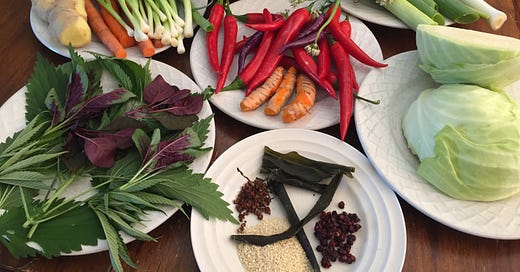



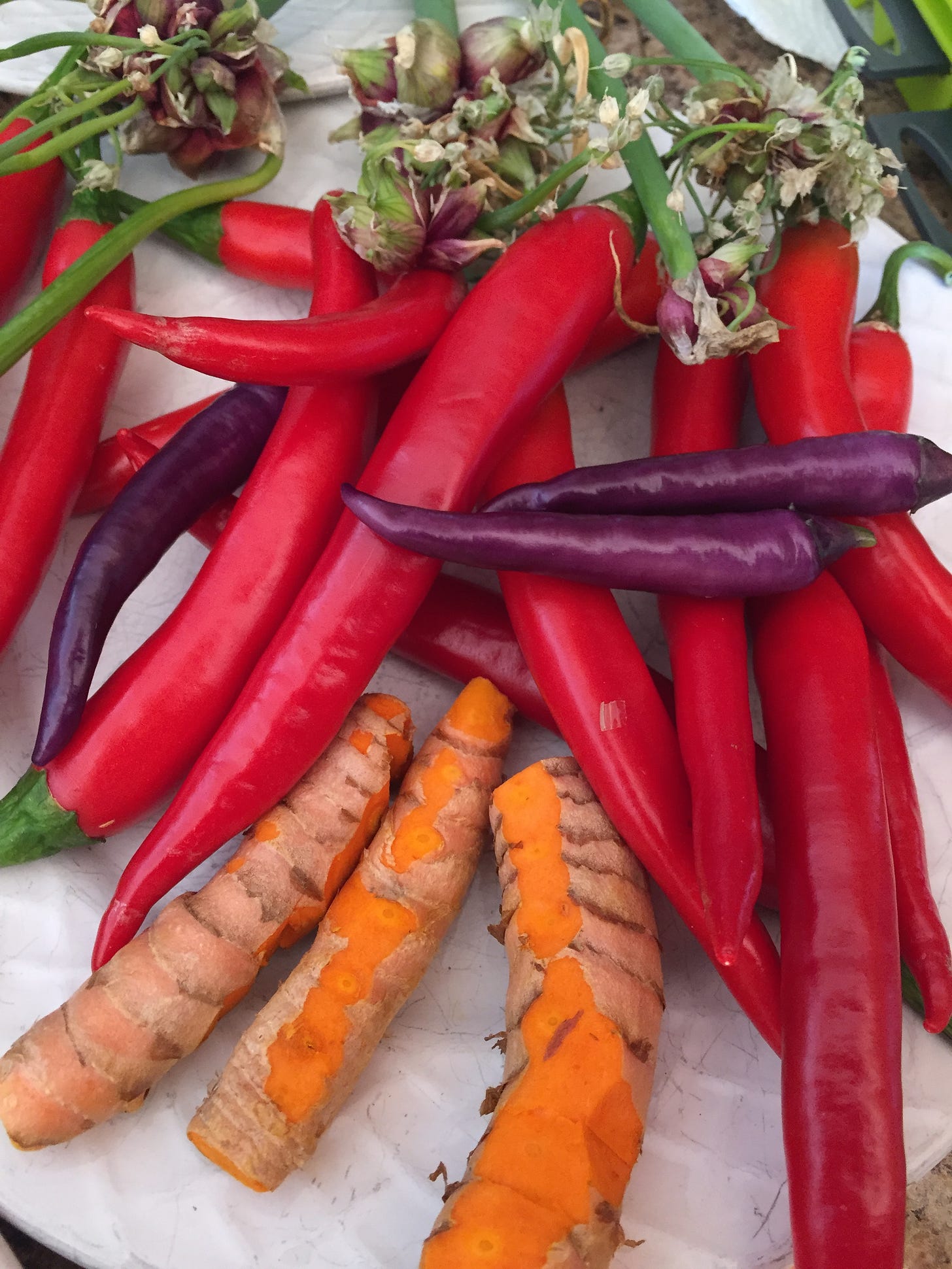


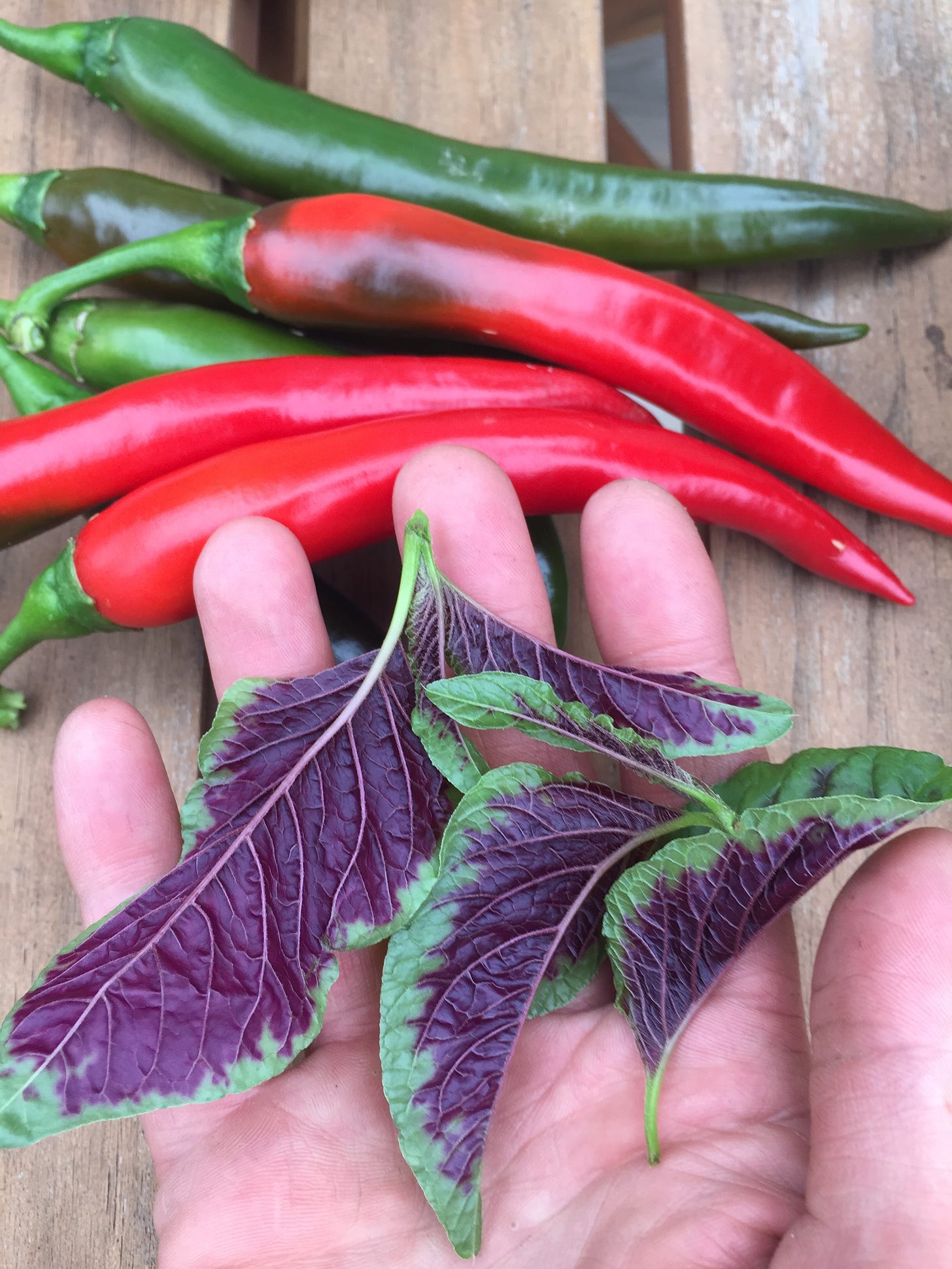
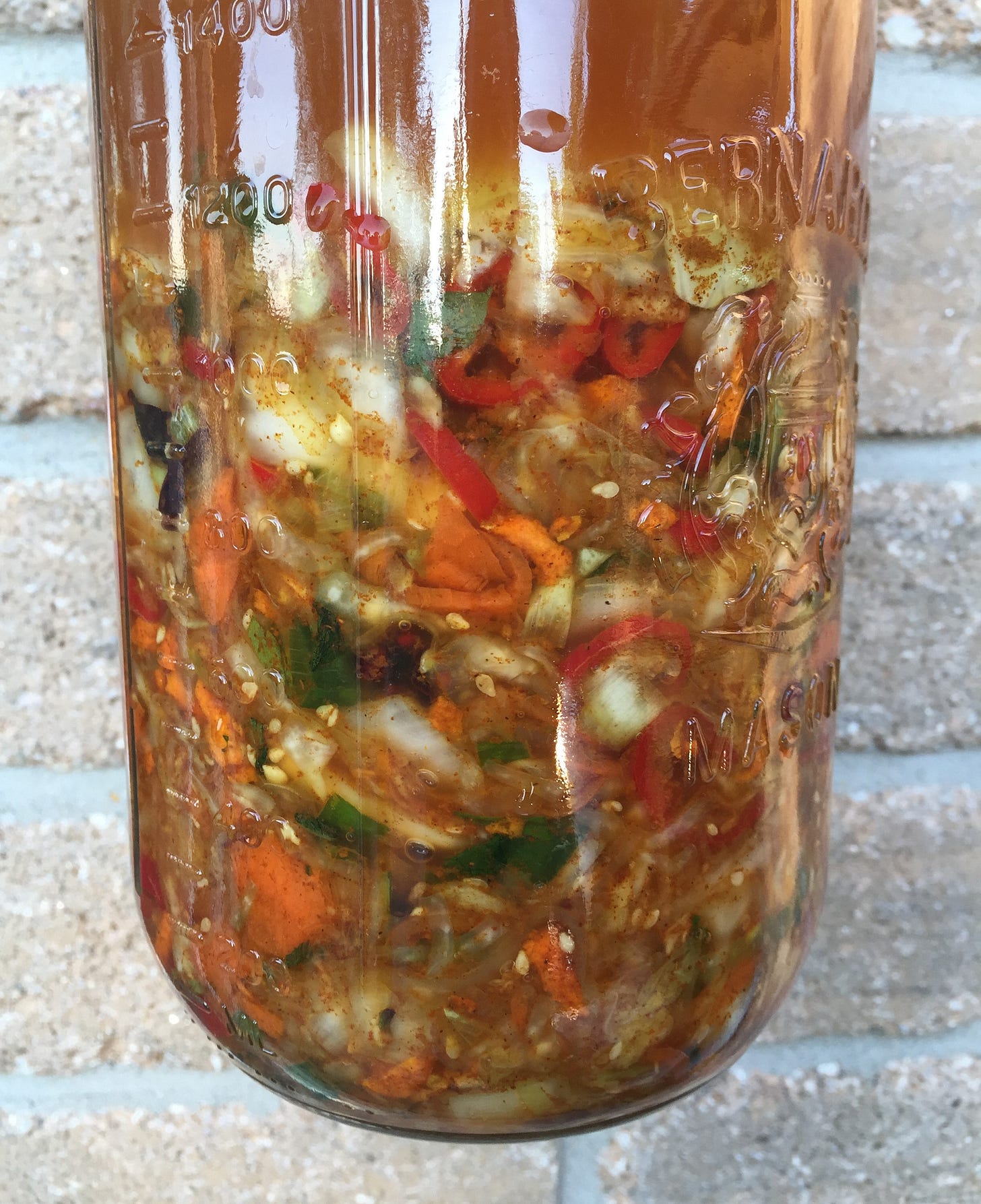

Thanks!
💖🙏 What a tasty recipe. Thank you!